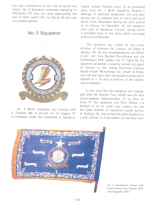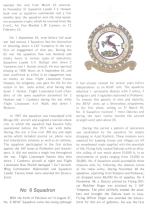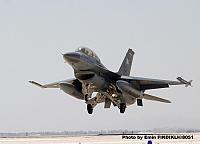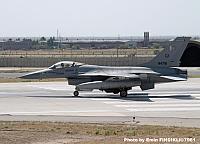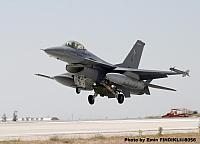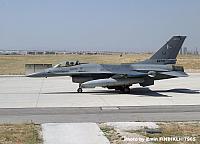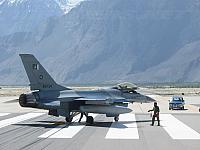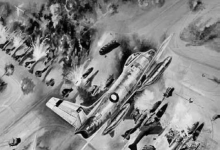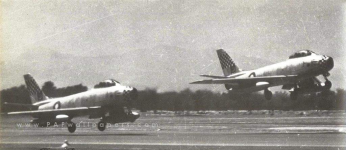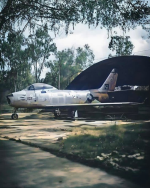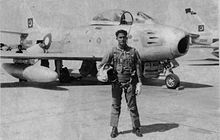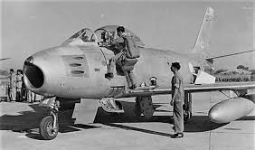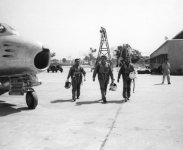Navigation
Install the app
How to install the app on iOS
Follow along with the video below to see how to install our site as a web app on your home screen.
Note: This feature may not be available in some browsers.
More options
Style variation
You are using an out of date browser. It may not display this or other websites correctly.
You should upgrade or use an alternative browser.
You should upgrade or use an alternative browser.
PAF Squadron History
- Thread starter ghazi52
- Start date
Fatman17
THINK TANK: CONSULTANT
- Apr 24, 2007
- 37,383
- 43,757
- Country of Origin

- Country of Residence

 | 9th squadron ( PAF)" Griffins" |
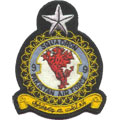
| 9 sqn " Griffins" ( PAF) |
| Status: | Active |
| Version: | F-16A/B block 20 MLU |
| Role: | Multirole, Training |
| Tailband: | N/A |
| Motto: | How high you fly depends on how brave you are. |
| Badge: | A standing Red Griffin. |
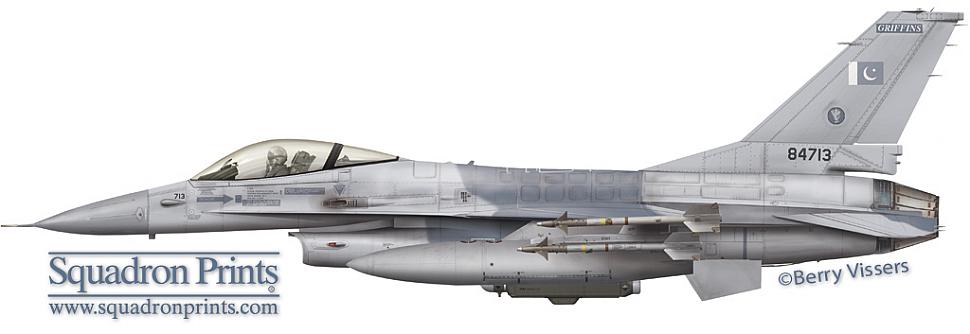
Sideways profile for 9 sqn in 2007.
Fatman17
THINK TANK: CONSULTANT
- Apr 24, 2007
- 37,383
- 43,757
- Country of Origin

- Country of Residence

F-16 History
The 9th squadron was the second within the PAF to be equipped with the F-16. The first aircraft arrived in the course of 1984. With the introduction of the F-16, the squadron was moved from Masroor AB to Sarghoda AB to form the 38th Wing there. This move was meant to reinforce the units at Sarghoda AB which is situated closer to the Afghan border then Masroor AB, which lays on the southern coastline.
Immediately with its introduction, the F-16 was the premier front-line fighter of the Pakistani Air Force. This meant that the F-16 was sent out to patrol Pakistans borders. With the Soviet invasion in Afghanistan in 1979, a lot of turmoil existed in the Pakistani-Afghan border region. Russian and Afghan aircraft regularly crossed the border with Pakistan. F-16s were sent to counter these intrusions.
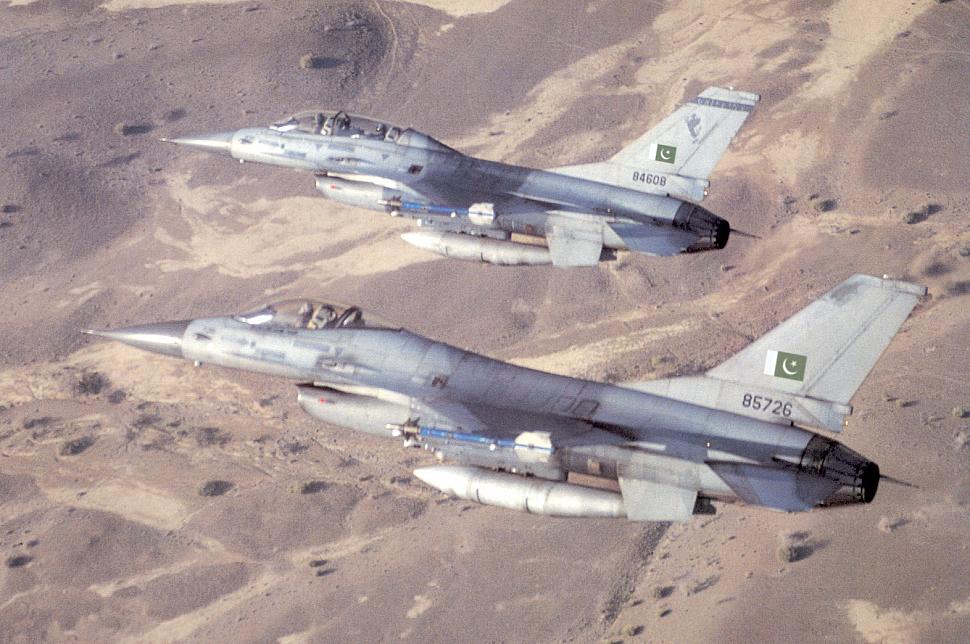
PAF F-16A #85726 and F-16B #84608 over the Choolistan desert, armed with AIM-9 Sidewinders - the PAF's main air-to-air weapons [PAF photo]
This tense situation existed until the Soviet withdrawal in 1989. In that period, 9th squadron was credited with three air kills against Soviet and Afghan aircraft. The first interception occurred on May 17th, 1986 when Squadron Leader Mohammed Yousaf shot down two Su-22 fighters near Parachinar. The second interception occurred on March 30th, 1987 when an An-26 fell victim to Squadron Leader Sikander Hayat near Miranshah.
Already worked up as an air defence asset, the Pakistani Air Force wanted to expand the possibilities of the F-16 and also use it in the ground attack role. Therefore it installed the Thompson-CSF ALTIS II laser designation pod on its F-16s from 1987 onwards. Pakistan was the first country to introduce this pod on its F-16 which makes it possible to accurately deliver laser guided bombs as the GBU-10/12.
With the decision to upgrade the existing F-16s to MLU standards in the near future, the possibilities of the PAF to put the F-16 into operation will expand drastically.
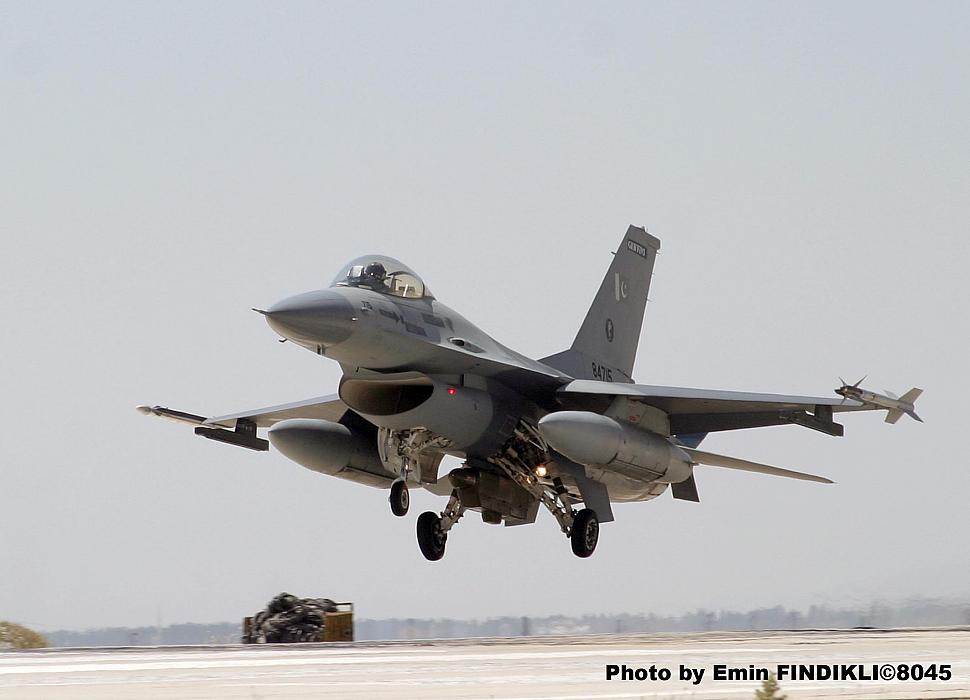
PAF F-16A block 15 #84715 from the 9th sqn is coming in for landing at Konya AB during exercise Anatolian Eagle held there in June of 2006. [Photo by Emin Fýndýklý]
Aircraft Markings History
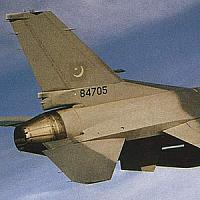
1984 - 2005
The PAF F-16s were pooled at this time and no unit marking were present on the tail. Only a Pakistani flag adorned it in the center with the serial number on the tail base. The flag also existed in a full color format.
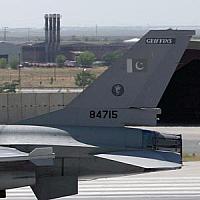
2005 - present
The Pakistani flag and serial number remained. A squadron logo was added below the flag with the squadrons name added on top of the tail.
Fatman17
THINK TANK: CONSULTANT
- Apr 24, 2007
- 37,383
- 43,757
- Country of Origin

- Country of Residence

Unit History
- 1943: Activation of the squadron in Risalpur (Indian squadron)
- 1943: ‘Hurricane’ IIC
- 1944: ‘Spitfire’ VIII
- 1947: Re-activation of the squadron in Peshawar (as Pakistani squadron)
- 1947: ‘Tempest’ Mk. II
- 1950: 'Fury' FB60
- 1956: 'Fury' FB60 (Kohat AB)
- 1961: F-104A ‘Starfighter’
- 1973: Mirage VPA (Rafiqui AB)
- 1981: Mirage VPA (Masroor AB)
- 1984: F-16A/B ‘Fighting Falcon’ (Sarghoda AB)
- 2007: F-16AM/BM ‘Fighting Falcon’
F-16 Airframe Inventory
- All 9 sqn F-16s in our F-16 Aircraft Database (past and current aircraft)
- Current 9 sqn F-16s in our F-16 Aircraft Database
Photos
Fatman17
THINK TANK: CONSULTANT
- Apr 24, 2007
- 37,383
- 43,757
- Country of Origin

- Country of Residence

No 1 FCU (Fighter Conversion Unit ) has been the new home for the newly graduate for many years who earn their wings from Academy. Although K-8s will take over this role from FT-5s in few years but until then the old rugged FT-5 will continue to provide its services.
Even though, FT-5 has a face that only a mother could love but looks aside, I would say that it has one of the best safety records of all the current types that PAF operates. While one compares it with any other jet, please do take in consideration that it’s mostly flown by the pilots who have barely 170 hours of flying time on their hands. Unlike other jets these birds never enjoyed the privilege of shelter parking but have been bearing the extreme weathers of Mianwali while operating from a big tarmac for last 30 years. Imagine the toll it has taken onto its airframe/structure in all those years. Despite student pilots abuse to this bird to max: especially during circuit & landing phase, it is still standing strong and showing no signs of surrendering.
PAF operates a total of around 35 FT-5s and they all are in perfect flying condition. Transition from American T-37 to Chinese FT-5 is a very interesting one. T-37 is side by side seating arrangement , its very spacious ( bad for student as instructor has more room to swing his punches ) , it has a very nice air-conditioning / heating systems , no G-suit but a pilot wears a back pack parachute , electrically operated canopy that could be opened while taxing , two throttles because of two engines , a nice front and side view , foot brakes , airspeed indicator in Nautical miles ( knots) etc etc……………….After flying such a beautiful aircraft for almost one year when one first time straps him/her self in the cockpit of FT-5…it’s a depressor…..
Contrary to its predecessor, FT-5 is a single engine, single throttle, tendon seat aircraft with a very obstructed front view due to canopy sill. Students wear the G-suits for the first time and love the fact that their instructor can never reach them (as he sits in the rear seat)…..Canopy is locked from out side by crew chief before you start and he opens it once you park the aircraft after landing…..its air conditioner is horrible and leaves you to roast inside with closed canopy especially in the soaring heat of Mianwali. Speed indicator is in kilometres, the engine starter is manual and the brakes are like cycle brakes that are hand operated…What the hell!!!!…….When in FCU , you miss T-37 more than your own mother or your family...
Anyway ,6 months course passes quickly and one moves onto the REAL fighters ….Despite all its oddities and bashing by pilots, FT-5s have served very well , outlived its expected service and no matter how badly you treat it , it never turns its back on you…Unlike other Chinese jets, it’s a very forgiving bird….With more K-8s arriving , we may not see FT-5s on the Mianwali tarmac in few years time but it will be missed by all those who flew it ….
Credit: Fatman from PDF 1.0
Even though, FT-5 has a face that only a mother could love but looks aside, I would say that it has one of the best safety records of all the current types that PAF operates. While one compares it with any other jet, please do take in consideration that it’s mostly flown by the pilots who have barely 170 hours of flying time on their hands. Unlike other jets these birds never enjoyed the privilege of shelter parking but have been bearing the extreme weathers of Mianwali while operating from a big tarmac for last 30 years. Imagine the toll it has taken onto its airframe/structure in all those years. Despite student pilots abuse to this bird to max: especially during circuit & landing phase, it is still standing strong and showing no signs of surrendering.
PAF operates a total of around 35 FT-5s and they all are in perfect flying condition. Transition from American T-37 to Chinese FT-5 is a very interesting one. T-37 is side by side seating arrangement , its very spacious ( bad for student as instructor has more room to swing his punches ) , it has a very nice air-conditioning / heating systems , no G-suit but a pilot wears a back pack parachute , electrically operated canopy that could be opened while taxing , two throttles because of two engines , a nice front and side view , foot brakes , airspeed indicator in Nautical miles ( knots) etc etc……………….After flying such a beautiful aircraft for almost one year when one first time straps him/her self in the cockpit of FT-5…it’s a depressor…..
Contrary to its predecessor, FT-5 is a single engine, single throttle, tendon seat aircraft with a very obstructed front view due to canopy sill. Students wear the G-suits for the first time and love the fact that their instructor can never reach them (as he sits in the rear seat)…..Canopy is locked from out side by crew chief before you start and he opens it once you park the aircraft after landing…..its air conditioner is horrible and leaves you to roast inside with closed canopy especially in the soaring heat of Mianwali. Speed indicator is in kilometres, the engine starter is manual and the brakes are like cycle brakes that are hand operated…What the hell!!!!…….When in FCU , you miss T-37 more than your own mother or your family...
Anyway ,6 months course passes quickly and one moves onto the REAL fighters ….Despite all its oddities and bashing by pilots, FT-5s have served very well , outlived its expected service and no matter how badly you treat it , it never turns its back on you…Unlike other Chinese jets, it’s a very forgiving bird….With more K-8s arriving , we may not see FT-5s on the Mianwali tarmac in few years time but it will be missed by all those who flew it ….
Credit: Fatman from PDF 1.0
ghazi52
Think Tank Analyst
- Mar 21, 2007
- 116,875
- 167,098
- Country of Origin

- Country of Residence

- Thread starter
- #100

This is One of the Finest batch of PAF. 51st GD(P) Course
1- Pilot Officer Rashid Minhas [Shaheed]
2- Air Chief Marshal [R] Kaleem Saadat
3- Group Captain [R] S.M. Hussaini
Other two big names of 51st GD(P) course went Bangladesh ; later become Chief of Air Staff of Bangladesh Air Force.
4 - Air Vice Marshal Fakhrul Azam
5- Air Vice Marshal Muhammad Rafiqul Islam
Users who are viewing this thread
Total: 1 (members: 0, guests: 1)
Pakistan Defence Latest
-
-
Reports: Bajwa agreed to curtail Pakistan’s ballistic missile program (4 Viewers)
- Latest: FreePalestine
-
-
-
Country Watch Latest
-
Why India Deliberately kept Weakened Bangladesh’s Military | InShort (6 Viewers)
- Latest: CallSignMaverick
-
Here Are Seven Steps That Union Government Must Take To Secure The ‘Chicken’s Neck’ Corridor (1 Viewer)
- Latest: Beijingwalker
-
-
-
Latest Posts
-
-
-
Why India Deliberately kept Weakened Bangladesh’s Military | InShort (6 Viewers)
- Latest: CallSignMaverick
-
Here Are Seven Steps That Union Government Must Take To Secure The ‘Chicken’s Neck’ Corridor (1 Viewer)
- Latest: Beijingwalker


